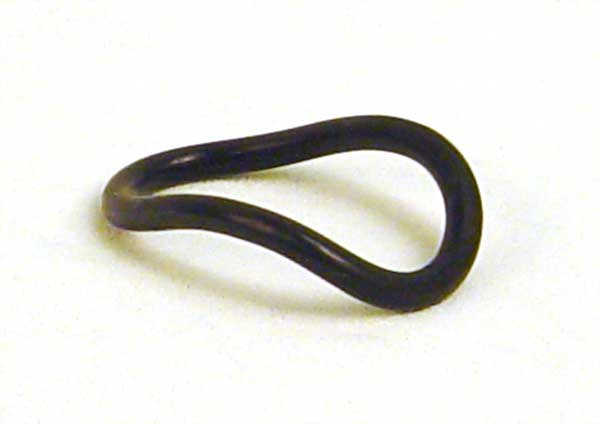Female Surgeries

Pessary.
Assisted with the repositioning of a displaced or prolapsed uterus. UWO Medical
Artifact Collection, 2004.573.01.01
1
| 2
| 3
| 4
| 5
| 6
While superintendent at the London Asylum for the Insane, Dr. R. Maurice Bucke advocated gynaecological
surgerry on women. He believed that there was a connection between
"damaged" or "displaced" female reproductive organs and
insanity. With limited support from the medical community, Dr. Bucke and a
local gynaecologist, Dr. Hobbs, performed over 200 surgeries on women in hopes
of "curing" their insanity. Of the 106 surgeries performed between
1895 and 1898, Dr. Bucke claimed that 71 patients, "either recovered their
mental health or this was improved." Many different types of surgeries
were performed during this three year time span: 16 hysterectomies, 12 removals of diseased
ovaries and tubes, 22 operations involving the replacing and retaining of the
uterus in the normal position, 30 operations on the cervix, 21 minor uterine
diseases, and 8 operations for vaginal lesions. Comparing the various types of
surgery to recovery rates, Dr. Bucke concluded that, "[d]iseases of the
ovaries, of the cervix and of the mucous lining of the uterus then seem to have
more effect in inducing insanity than have uterine tumours and uterine
displacements." The ovaries and "tubes" are the most
"vital" organs and therefore are "the most intimately associated
with the mental and spiritual life, of all the organs under
consideration," according to a speech made by Dr. Bucke in 1900. However,
Dr. Bucke never specified in his speeches to the North American medical
community which types of mental disease experienced by women could be cured
with surgery. Many doctors were publicly skeptical about the success of Dr.
Bucke's surgeries, claiming that insanity could not simply be cured with a
surgical procedure. After Dr. Bucke's death, gynaecological surgeries performed
at the former Asylum decreased dramatically.